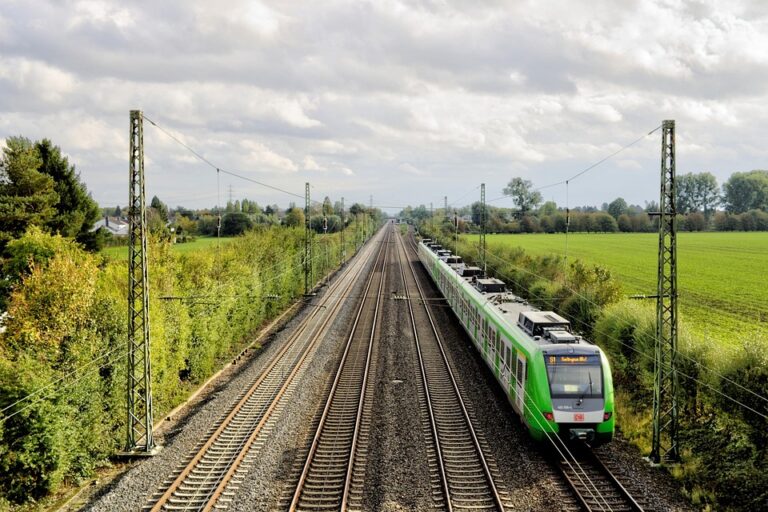Hyperloop and Beyond: Will High-Speed Travel Change the Way We Commute?
Meta Description: Explore how future mobility innovations like Hyperloop could revolutionize commuting, making travel faster and more efficient.
The world is on the brink of a transportation revolution. As we delve into the concept of future mobility, one innovation stands out: the Hyperloop. This high-speed travel system, envisioned by entrepreneurs and engineers alike, aims to transform how we commute, making long distances feel shorter and enhancing connectivity. But will it change the way we live and work? Let’s explore the implications of this groundbreaking technology.
Understanding Hyperloop Technology
What is Hyperloop?
Hyperloop is a proposed mode of transportation that utilizes magnetic levitation to propel passenger pods through low-pressure tubes at unprecedented speeds of up to 760 miles per hour. This concept was popularized by Elon Musk in 2013, and since then, several companies have embarked on making it a reality. With its promise of high-speed travel, Hyperloop could significantly cut down on travel time between cities.
Key Features of Hyperloop
- Speed: Hyperloop aims to travel faster than conventional trains and planes.
- Energy Efficiency: The system could run on renewable energy sources, minimizing its carbon footprint.
- Safety: Enclosed pods reduce the risk of accidents associated with ground transportation.
The Potential Impact on Commuting
Time Efficiency
One of the most significant advantages of Hyperloop is the reduction in travel time. Commuting from Los Angeles to San Francisco, which currently takes around six hours by car or one hour by plane, could potentially be reduced to a mere 30 minutes. This time efficiency not only enhances productivity but also shifts our understanding of ‘commutable distances.’
Environmental Benefits
With concerns over climate change, Hyperloop presents a sustainable commuting solution. Utilizing electric propulsion and a sealed environment reduces emissions compared to traditional transportation methods. As cities grow and congestion increases, adopting eco-friendly travel options like Hyperloop could play a crucial role in reducing urban air pollution.
Economic Growth and Urban Development
High-speed travel can foster economic growth by facilitating business operations across geographies. Imagine a scenario where business leaders can attend meetings in person from across the state within an hour. Hyperloop has the potential to catalyze new business hubs and commercial centers, leading to increased employment opportunities and economic activity.
Challenges to Hyperloop Implementation
Cost and Investment
Developing Hyperloop infrastructure is a significant financial undertaking. The initial costs for construction and technology development are estimated in the billions. Companies must secure the necessary funding, possibly from government sources or private investors, to bring this vision to life.
Regulatory Hurdles
Navigating government regulations poses another challenge. Ensuring the safety and efficacy of Hyperloop technology requires extensive testing, which can be a lengthy and cumbersome process. Collaboration with governments will be crucial in developing the necessary regulatory frameworks.
Public Acceptance
For Hyperloop to succeed, public acceptance is key. People need to trust this new form of travel, which involves changes in their commuting habits. Educating the public about the safety and benefits of Hyperloop technology is essential in fostering this acceptance.
Future Mobility: A Holistic Approach
Integrating with Existing Transportation Networks
Hyperloop should complement existing transit systems rather than replace them. Efficient integration can allow seamless transfers between conventional trains, buses, and Hyperloop pods. This holistic approach to future mobility ensures that commuters have multiple options to choose from, thus enhancing convenience and accessibility.
Innovations Beyond Hyperloop
While Hyperloop is a game-changer, it’s essential to explore other innovations in future mobility. Electric vehicles (EVs), autonomous driving technology, and improved public transport solutions are just as significant. Together, these advancements pave the way for a comprehensive transformation in how we travel.
Conclusion: The Commuting Revolution
The promise of Hyperloop and similar high-speed travel innovations presents an exciting frontier for future mobility. While challenges remain, the potential benefits—faster travel times, environmental sustainability, and economic growth—are too significant to ignore. As we stand at this crossroads of transportation evolution, embracing these changes can lead to a more efficient, interconnected world.
Call to Action
Stay informed about the latest developments in Hyperloop technology and other future mobility solutions. Subscribe to our newsletter for updates on how these innovations will reshape our commuting landscape and impact your daily life.
By focusing on high-speed travel technologies like Hyperloop, we can begin to envision a future where commuting is faster, greener, and more efficient—ultimately enhancing our quality of life and our cities.


